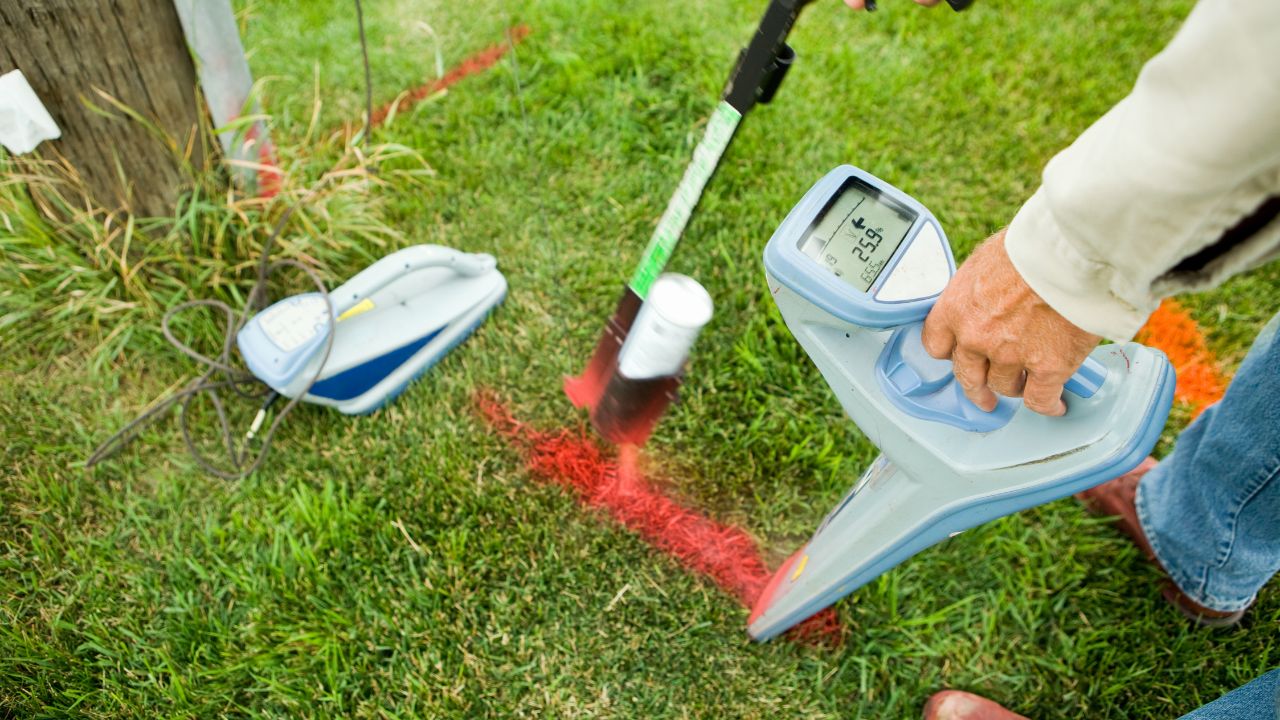
Key Takeaways
Imagine breaking ground on a construction site, only to hit a gas line. The damage, delays, and risks are costly. That’s why utility locating services are critical. Before excavation begins, knowing the exact location of underground infrastructure ensures a smooth, accident-free project.
Bess Utility Solutions provides accurate, reliable underground utility locating services to prevent costly mistakes and keep projects on track. Their advanced technologies, from water pipes to fiber optic cables, help construction teams dig confidently.
Hitting underground pipes or electrical cables can lead to expensive repairs. A single accidental strike can disrupt entire systems, requiring extensive repairs that delay the project. With accurate utility locating, construction teams can identify underground infrastructure before digging, ensuring they avoid unnecessary costs and resource-intensive fixes.
Beyond repair expenses, damaging critical infrastructure like gas lines, water mains, or communication cables can result in fines, legal liability, and even reputational damage for contractors. Gas leaks pose fire hazards, while water line breaks can flood excavation sites, leading to further financial setbacks. Additionally, telecommunications outages caused by fiber optic cable damage can affect businesses and emergency services, increasing overall risks.
By using precise underground utility locating services, project managers ensure that excavation plans avoid critical underground networks, minimizing the likelihood of disruptions. This proactive approach saves time, reduces financial burdens, and helps maintain compliance with local regulations and safety standards. Investing in accurate utility mapping ultimately translates into long-term cost savings and project efficiency.
Construction sites are high-risk environments, especially when workers unknowingly operate near buried utility lines. Accidentally cutting into a gas pipe or electrical cable can result in fires, explosions, or electrocution. Proper utility locating minimizes these risks by marking the exact locations of potential hazards, ensuring a safer work environment, and protecting lives on-site.
Unexpected utility strikes can halt excavation projects for days or even weeks while repairs and inspections take place. When water or sewer lines are damaged, regulatory authorities may require additional safety assessments before work can resume. By using private underground utility locating services, teams can prevent such costly delays and maintain their project timelines.
Many municipalities and regulatory agencies require utility locating before any digging begins. Failure to comply with these regulations can result in hefty fines, project shutdowns, or legal liabilities. Proper underground utility locating ensures compliance with local, state, and federal laws, helping contractors avoid unnecessary legal trouble while maintaining high safety standards.
Damaged underground utilities don’t just affect the construction site—they can have serious consequences for the surrounding community. Sewer line breaks can contaminate water supplies, gas leaks can lead to explosions, and severed communication cables can disrupt emergency services. Utility mapping helps prevent these incidents, ensuring that construction projects do not endanger the public.
Without an accurate understanding of what lies beneath the surface, excavation projects become unpredictable and inefficient. Knowing the exact locations of underground facilities allows construction teams to develop safer, more strategic digging plans. This reduces unnecessary excavation work, minimizes labor costs, and ensures smooth construction activities.
Accidental strikes on underground lines can result in dangerous accidents, leading to injuries, property damage, and legal consequences. Gas leaks from punctured pipes can ignite fires, while damaged electrical cables can cause fatal electrocutions. Using state-of-the-art technologies in utility locating significantly reduces these risks, creating a safer construction environment for everyone involved.
Modern utility locating uses advanced ground-penetrating radar (GPR), electromagnetic locators, and vacuum excavation potholing to provide high-definition scans of underground infrastructure. These tools allow precise detection of metallic and non-metallic utilities, ensuring accurate measurements and safe excavation. With Bess Utility Solutions’ expert team, projects benefit from the highest level of accuracy available in the industry.
Before tearing down a building or structure, it’s crucial to identify any buried utilities beneath the site. Many older buildings have outdated or undocumented underground utility lines, posing significant risks during demolition. Private utility locating services ensure that contractors can safely disconnect, relocate, or protect existing infrastructure before demolition work begins, preventing unexpected disruptions.
Utility locating isn't just essential for immediate construction projects—it plays a crucial role in long-term infrastructure development. Accurate mapping of underground utility lines allows engineers, city planners, and developers to design future projects with confidence, ensuring that existing utilities are properly accounted for. This proactive approach prevents future conflicts and supports the development of smarter, more efficient urban environments.
Excavation without utility locating is a gamble no contractor should take. Bess Utility Solutions provides expert private utility locating services to keep projects safe, efficient, and compliant. Their experienced team uses advanced technologies like vacuum excavation, potholing, and video pipe inspection to ensure utmost accuracy.
Contact Bess Utility Solutions today at (408) 988-0101 to schedule underground utility locating services and prevent costly mistakes on your next project!